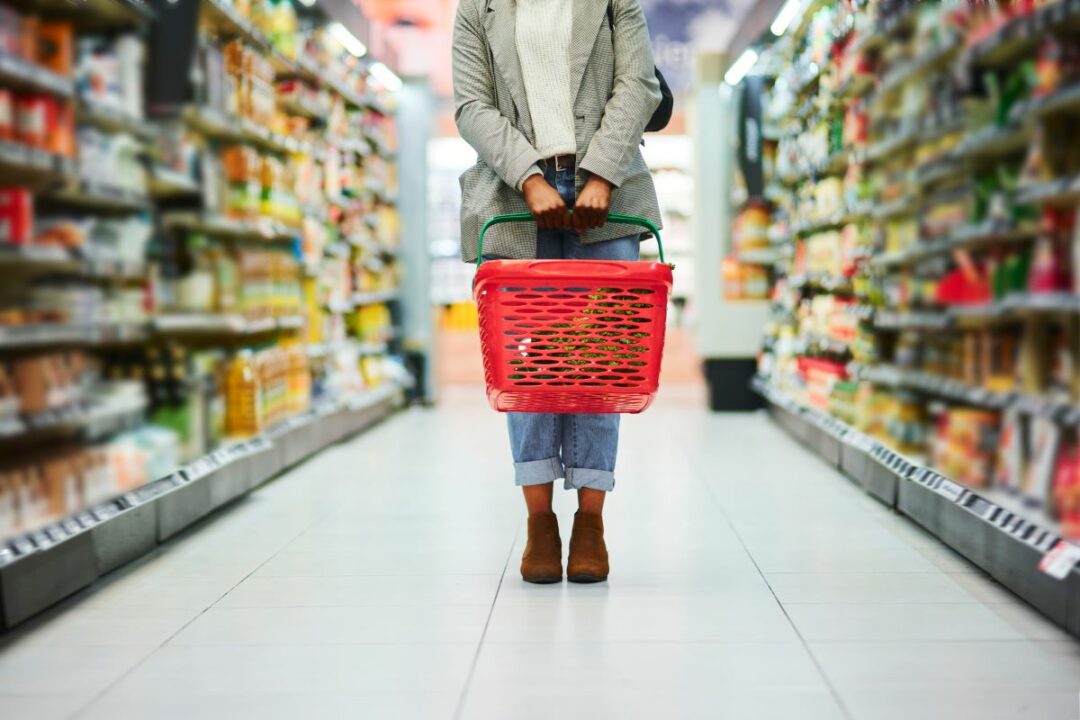
Visit Our Sponsors |
|
|
|
|
|
|
|
|
|
|
|
|
|
|
|
|
|
|
|
|
|
|
|
|
|
|
|
|
|
|
|
|
|
|
|
|
|
|

Photo: iStock/Adene Sanchez
 Analyst Insight: By optimizing forecasting, replenishment, and logistics, artificial intelligence helps grocers reduce excess stock, spoilage, and unnecessary transport — all of which cut costs and lower emissions. That means grocers can boost profitability while naturally reducing their environmental impact. Sustainability isn’t a tradeoff; it’s a smarter way to do business.
Analyst Insight: By optimizing forecasting, replenishment, and logistics, artificial intelligence helps grocers reduce excess stock, spoilage, and unnecessary transport — all of which cut costs and lower emissions. That means grocers can boost profitability while naturally reducing their environmental impact. Sustainability isn’t a tradeoff; it’s a smarter way to do business.
The grocery industry is under increasing pressure to cut waste, reduce emissions, and improve efficiency — all while staying profitable. Software that deploys AI is proving to be highly effective, helping retailers optimize operations and drive sustainable outcomes. By leveraging AI in three key areas — forecasting, replenishment, and logistics — grocers can achieve their sustainability goals.
Forecasting
In the past, grocers have relied on historical data and manual input for forecasting, which often fails to account for unexpected market shifts. AI eliminates this blind spot by dynamically incorporating real-time factors such as sudden weather changes or economic shifts.
One of the biggest drivers of waste in grocery retail is inaccurate demand forecasting. When grocers miscalculate how much product they need, they either understock, leading to lost sales, or overstock, resulting in spoilage. AI-powered forecasting solutions account for variables such as weather, local events, promotions, market cannibalization and seasonality. These complex machine learning algorithms create more accurate predictions than traditional methods, enabling grocers to stock the right amount of inventory at the right time.
For example, a major online grocery retailer specializing in fresh foods saw a 49% decrease in food waste and spoilage after implementing AI-driven demand forecasting. Another leading regional supermarket chain reduced spoilage by 20% in fresh items and 10% overall through improved forecasting and replenishment.
Replenishment
AI also enhances replenishment strategies. Many grocers rely on outdated auto-replenishment systems that order the same quantities regardless of changing demand patterns. This leads to either excessive stock that spoils or insufficient stock that causes out-of-stocks.
For example, many grocers have historically relied on static replenishment settings that fail to adapt to shifting demand patterns. AI-driven replenishment optimization introduces dynamic safety stocks, adjusting inventory levels in response to fluctuations in real-time demand.
Additionally, AI considers product shelf-life when generating replenishment orders, ensuring perishable items are stocked in quantities that maximize freshness while minimizing waste. By optimizing order cycles and replenishment quantities, grocers can strike the right balance between availability and sustainability.
Logistics
Beyond optimizing demand forecasting and replenishment orders, AI also helps identify root causes of inefficiencies, such as oversized pack sizes, while adjusting logistics planning to minimize unnecessary transportation and cut CO2 emissions. By analyzing delivery schedules, store traffic patterns, and inventory turnover, AI helps grocers consolidate shipments, ensuring trucks are filled with efficiency in mind. This not only lowers fuel consumption but also reduces overall supply chain emissions.
Despite these advantages, some grocers struggle with AI adoption. The most common barriers include uncertainty on where to start. With so many AI solutions available, grocers may be unsure which offer the best return on investment. Another challenge is dealing with regulatory pressures and traceability. Many grocers must meet strict sustainability and traceability requirements, adding complexity to AI implementation. Furthermore, there’s a tendency to focus on short-term costs as opposed to long-term benefits. Some retailers perceive sustainability efforts as costly rather than seeing them as a means to reduce waste and improve margins.
One regional grocer started with a small-scale AI-driven markdown optimization pilot, which quickly proved its value by cutting waste by 15% within six months. With these quick wins, the company built internal confidence, and expanded their use of AI-driven automation across replenishment and logistics.
Grocers should start with quick-win AI solutions that provide fast ROI. In this example, AI-powered fresh markdown optimization ensures that perishable items are marked down at the right time, reducing waste while maintaining profitability.
Historically, many grocers viewed sustainability as a compliance issue rather than a business strategy. However, the mindset is shifting. Investors and regulatory bodies are also pushing for more sustainable supply chains, while keeping financial incentives and penalties increasingly tied to environmental performance. Today, retailers recognize that reducing waste translates directly into cost savings and operational efficiency. Sustainability is no longer just about meeting regulations; it’s about improving profitability.
Grocers are also finding value in food donation and waste reduction initiatives. Organizations like Flashfood, which connects grocers with consumers to sell nearing-expiry food at a discount, and Divert, which helps retailers manage food waste through donation and diversion to renewable energy projects, help retailers divert unsellable but still edible food to donation programs, reducing landfill waste while earning tax deductions.
AI-driven forecasting, replenishment, and logistics are proving that sustainability and profitability go hand in hand. By embracing AI, grocers can significantly reduce food waste, cut emissions, and improve efficiency, all while strengthening their bottom line. In the future, sustainability won’t be an optional initiative; it will be an essential part of smart business operations.
RELATED CONTENT
RELATED VIDEOS
Timely, incisive articles delivered directly to your inbox.






